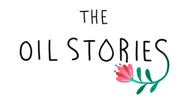What are essential oils? What is aromatherapy?
Reading time: 4 min
Very simply put, plants can produce 2 types of oils: fixed oils or carrier oils, that are greasy and we call them carriers (olive, walnut, almond, coconut oil etc) and essential oils, that are highly volatile. Still confused? Let me explain further.
Essential oils are volatile compounds that can be extracted from the seeds, roots, stems, bark, leaves, flowers, twigs, needles or resins of aromatic plants. Did you know that of all the plant species on Earth only 1% are aromatic?
On the other hand, carrier oils are extracted from the greasy parts of the plant: kernel, seed, nut. As a result, carrier oils are safe to apply neat on the skin, while essential oils need to be diluted as they are much more potent. Price wise, essential oils are much more expensive than their counterparts, their carriers.
Now I believe you have more clarity so let's delight you with some fun trivia. Ready?
The use of aromatic plants was originally part of herbal medicine that dates back thousands of years ago and was present in almost every geography. See some important “herbalist” countries below:
Ancient History
Ancient Egyptians used myrrh to treat hay fever. When Tutankamon’s tomb was opened in 1922, 35 alabaster jars were discovered, and they were still faintly aromatic. The contents, Frankincense and myrrh, considered high commodities, had been stolen.
In India, shamans were known as “perfumeros” and were healing with the scent of aromatic plants. Today, aromatics remain an important part of Ayurveda.
Tibetan medicine focused on the relationship of the person and the environment and society in which the person lives, rather than the disease alone. Prescriptions included mixtures with cardamom, clove, sandalwood, myrrh.
Theophrastus, the father of botany, discovered that the perfume of jasmine is stronger at night, that is why nowadays Jasmine is only hand-picked at night.
Hippocrates of Greece, known as the father of medicine, knew aromatic plants have strong anti-bacterial effects so urged people to use in order to protect themselves from the plague.
Much later in Europe, London, it is thought that glovemakers who became licensed to impregnate their wares with essential oils, managed to survive the Great Plague. Lucky fellows indeed.
Modern Era
The modern drug era was built on the shoulders of the herbal medicine discoveries. For instance, the salicylate in willow bark became aspirin.
Unfortunately, essential oils and herbal medicine lost out to profits of synthetic drugs. The 1910 Flexner report changed medical training in the US and homeopathic, naturopathic medicals schools were eliminated overnight.
Luckily, Aromatherapy was revived in France in 1928 by the chemist Rene-Maurice Gattefosse who was burnt in an explosion and managed to disinfect and heal his wounds solely with lavender oil. Impressed, he dedicated his entire life to studying essential oils and coined the term “aromatherapy”.
Today there is a plethora of information and enough evidence to suggest the future of medicine can be a “nice smelling” one. Essential oils are used in hospitals across the world and recognized by medical staff so let’s rejoice!
What is aromatherapy?
Aromatherapy does not mean just inhalation or spa massage contrary to popular belief.
Aromatherapy is a science that involves using essential oils via inhalation, topical application, oral, rectal and vaginal routes to provide healing and prevent illness. It is an alternative form of medicine that sees the human being as a whole and acts on all fronts: physical, emotional, mental.
The chemical composition of essential oils is very complex. Separating all active ingredients of an essential oil and recombining them will produce a poorer effect than the complete oil or herb. We know that the active substances in drugs were isolated from plants, however it was later discovered that the active substance alone can have side-effects while consuming the plant as whole would not.
For your amusement imagine this: we know that human body is 70% water but has anybody tried decomposing and recombining it back? The result would be just a water poodle.Once again nature proves its intelligence!
How are essential oils produced?
Early methods for extracting the fragrance included immersing plants in water or fatty materials. You might know this from the book and movie with the same name “The Perfume: The story of a murderer” by Patrick Suskind. What? You haven’t watched it yet? It is a must.
The alchemists of first centuries considered the essential oil the “soul” of the plant. Actually, “essential oil” is derived from the word “quintessence”.
Today, the most widely used methods of obtaining essential oils are:
- Distillation (most frequent)
- Cold pressing (mostly used for citrus fruits)
- Dolvent extraction for precious flowers like rose, jasmine
- CO2 extraction that is the newest but also costliest method.
Hopefully you had the focus to go through all this. Next time you feel your attention span is short or you can’t concentrate inhale some Rosemary. You will see how powered up you’ ll feel! You’re welcome:)
Yours dearly until next time,Daniela
